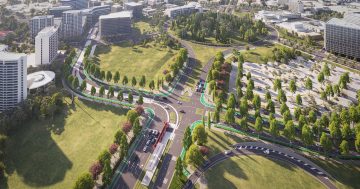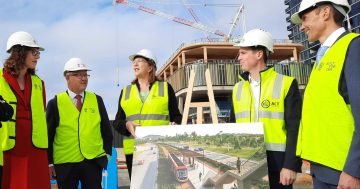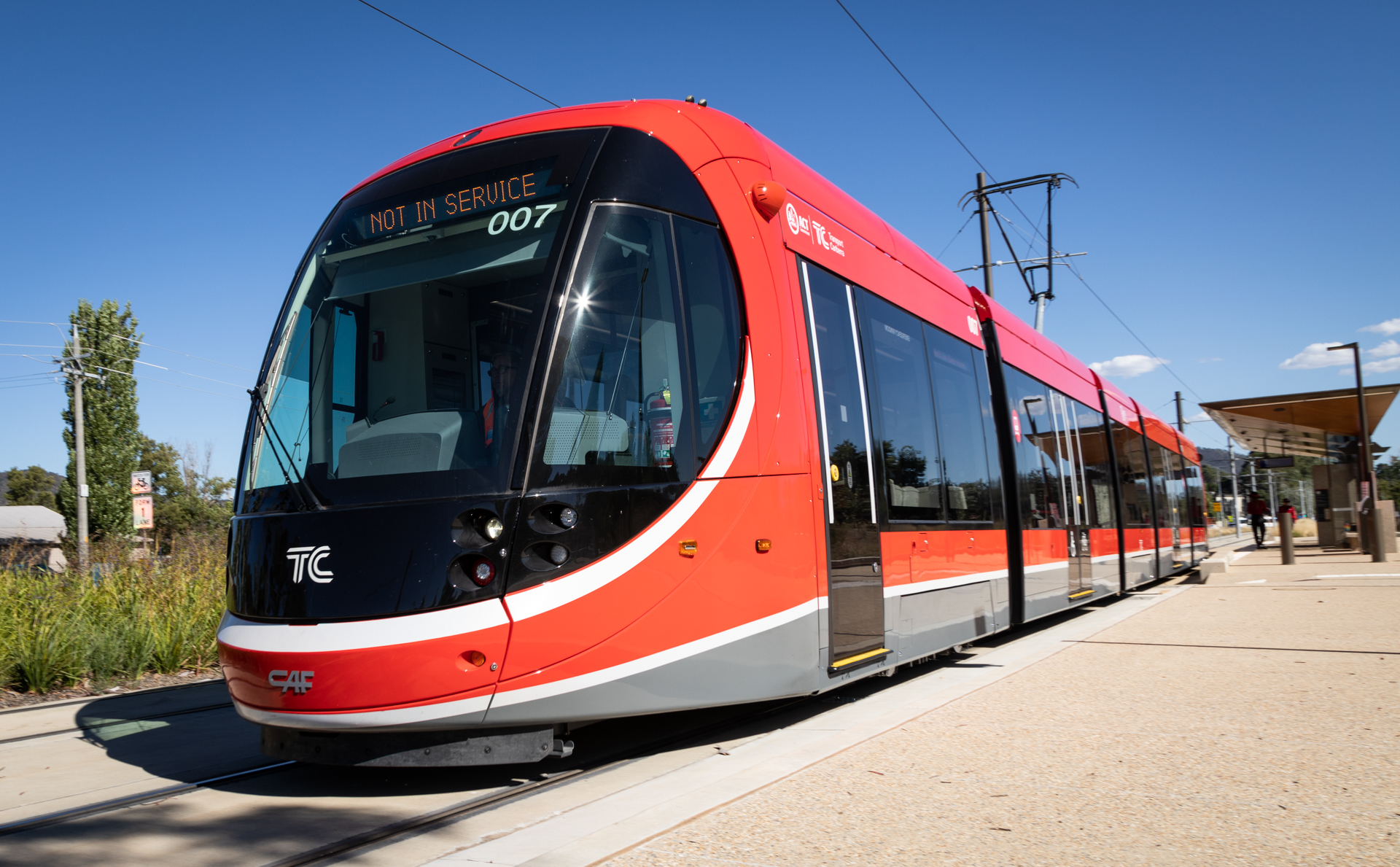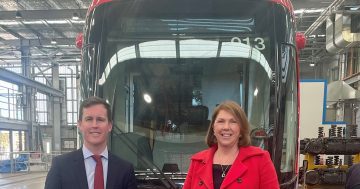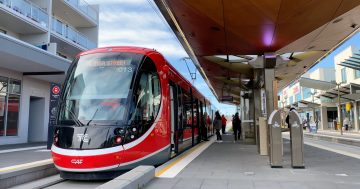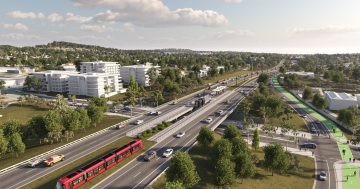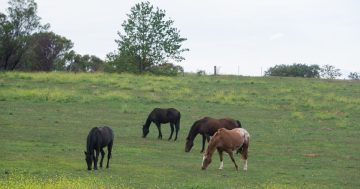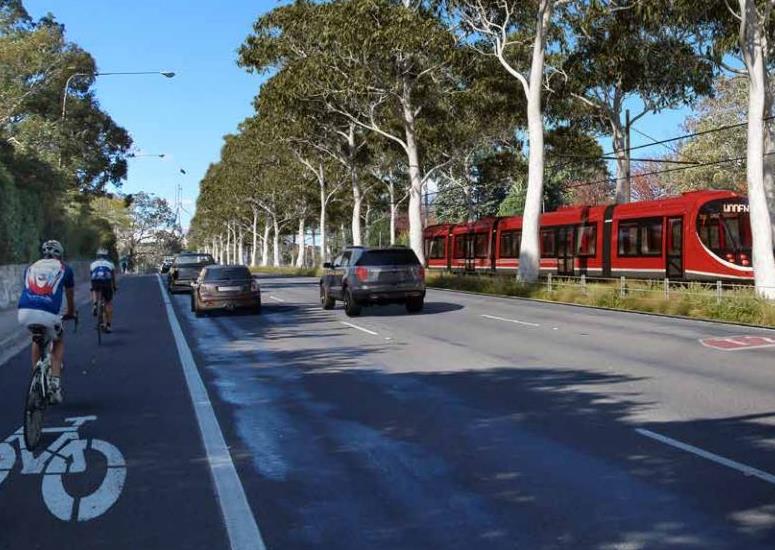
An artist’s impression of light rail Stage 2B along Adelaide Avenue. Image: ACT Government.
The ACT Government is turning its eye to the development of the light rail corridor to Woden and Mawson, commissioning an urban infill study to assess the type of potential buildings and appropriate levels of density for areas adjacent to the line.
It has contracted Sydney urban planning and development advisory firm Mecone to conduct the Light Rail Stage 2B Urban Infill Capability Assessment.
Light rail Stage 2B initially was slated to terminate at Woden, but the Labor-Greens Parliamentary Agreement includes a term to assess the viability and benefits of extending the line to Mawson as part of the business case.
Mawson is one of five regions in the study area, including the section of the North Curtin horse paddocks acquired in the West Basin land swap with the Commonwealth.
The study will also look at West Deakin, the Phillip/Woden Town Centre, and although Yarralumla is not specifically named, it will also take in the “rest of the corridor”.
The line will run along Adelaide Avenue into Yarra Glen to the planned Callam Street Interchange in Woden and then along Athllon Drive to Mawson, if that leg is viable.
The contract says the study will identify opportunities for ”orderly urban intensification” and guide the choice of ”appropriate built urban forms, dwelling diversity and density” for future development.
This is to be done at the precinct level and areas within the precinct, not on a block-by-block basis.
Mecone is expected to produce three scenarios for each area showing the potential for residential and employment growth to 2046.
One scenario should assess the unrealised development capacity of each precinct under existing planning rules, and two scenarios should identify and propose future residential and employment development opportunities based on ”sensible and demonstrated planning grounds”.
The assessment will cover zonings, density, building heights in the light of amenity, liveability, overshadowing and access to open space.
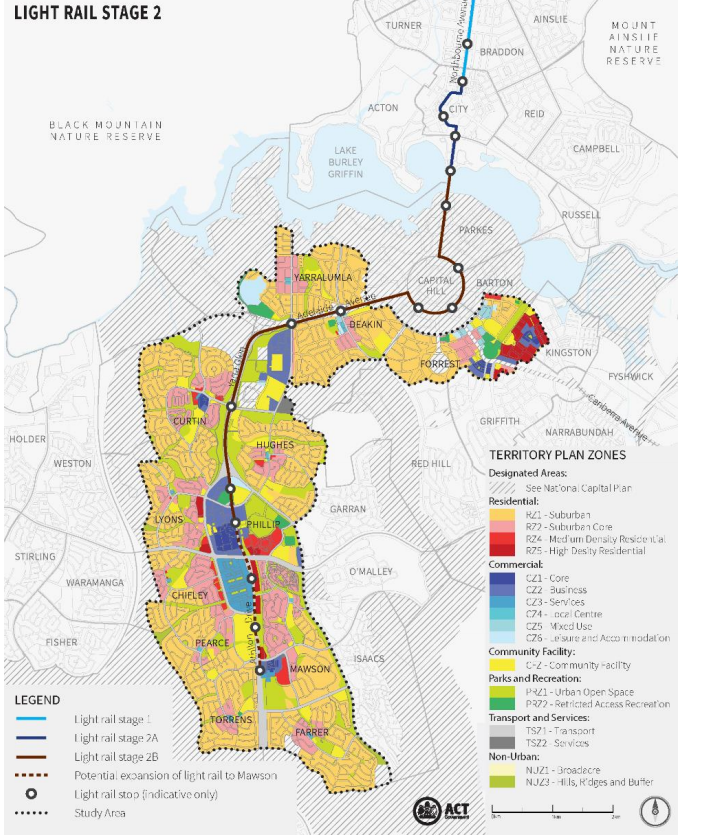
Light rail Stage 2B assessment study area. Image: ACT Government.
It will identify areas suitable for targeted urban renewal, such as vacant land, surface car parks and underutilised land, and new open space areas or corridors.
The government wants to know the opportunities for mixed-use centres close to potential future light rail stops, and maximising pedestrian and cycle access from new developments to the future stops.
It also wants to know what changes will be needed to the planning rules and zonings, as well as policy levers to guide future development and redevelopment with a particular focus on ”high quality, sustainable urban housing outcomes” and jobs growth.
Mecone will tell the planning directorate what it will need to consider in response to future development, such as expanding existing schools and community facilities.
A separate study will look at the capacity of existing infrastructure but Mecone’s work will contribute to it.
Light rail is being pursued in the context of the government’s state aim of a more “compact and connected city” and concentrating development close to the city centre, town and group centres and along key transit corridors.
The high-density development along Northbourne Avenue is being driven by light rail and is a strong economic byproduct.
“An important challenge in planning for urban intensification is to balance the scale of development and redevelopment whilst also protecting the existing positive character of areas and amenity of residents in established suburbs,” the contract document says.
It also highlights the need for more medium-density housing, known as the ‘missing middle’.
The study will also contribute to the City to Woden Planning Framework and may also be used to prepare the new Districts Plans and the Stage 2B light rail business case.
Mecone will deliver a final report by 5 October 2021. It is being paid $132,000.












